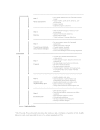eHealth program to empower patients in returning to normal activities and work after gynecological surgery: intervention mapping as a useful method for development
- PMID: 23086834
- PMCID: PMC3510728
- DOI: 10.2196/jmir.1915
eHealth program to empower patients in returning to normal activities and work after gynecological surgery: intervention mapping as a useful method for development
Abstract
Background: Full recovery after gynecological surgery takes much longer than expected regardless of surgical technique or the level of invasiveness. After discharge, detailed convalescence recommendations are not provided to patients typically, and postoperative care is fragmented, poorly coordinated, and given only on demand. For patients, this contributes to irrational beliefs and avoidance of resumption of activities and can result in a prolonged sick leave.
Objective: To develop an eHealth intervention that empowers gynecological patients during the perioperative period to obtain timely return to work (RTW) and prevent work disability.
Methods: The intervention mapping (IM) protocol was used to develop the eHealth intervention. A literature search about behavioral and environmental conditions of prolonged sick leave and delayed RTW in patients was performed. Patients' needs, attitudes, and beliefs regarding postoperative recovery and resumption of work were identified through focus group discussions. Additionally, a literature search was performed to obtain determinants, methods, and strategies for the development of a suitable interactive eHealth intervention to empower patients to return to normal activities after gynecological surgery, including work. Finally, the eHealth intervention was evaluated by focus group participants, medical doctors, and eHealth specialists through questionnaires.
Results: Twenty-one patients participated in the focus group discussions. Sufficient, uniform, and tailored information regarding surgical procedures, complications, and resumption of activities and work were considered most essential. Knowing who to contact in case of mental or physical complaints, and counseling and tools for work reintegration were also considered important. Finally, opportunities to exchange experiences with other patients were a major issue. Considering the determinants of the Attitude-Social influence-self-Efficacy (ASE) model, various strategies based on a combination of theory and evidence were used, resulting in an eHealth intervention with different interactive functionalities including tailored convalescence recommendations and a video to communicate the most common pitfalls during the perioperative period to patients and employers. Fifteen patients in the focus groups, 11 physicians, and 3 eHealth specialists suggested points for improvement to optimize the usability of the eHealth intervention and judged it an approachable, appropriate, and attractive eHealth intervention to empower gynecological patients.
Conclusions: The IM protocol was a useful method to develop an eHealth intervention based on both theory and evidence. All patients and stakeholders judged the eHealth intervention to be a promising tool to empower gynecological patients during the perioperative period and to help them to return to normal activities and work.
Conflict of interest statement
None declared.
Similar articles
-
Electronic Health Program to Empower Patients in Returning to Normal Activities After General Surgical and Gynecological Procedures: Intervention Mapping as a Useful Method for Further Development.J Med Internet Res. 2019 Feb 6;21(2):e9938. doi: 10.2196/jmir.9938. J Med Internet Res. 2019. PMID: 30724740 Free PMC article.
-
Intervention mapping for development of a participatory return-to-work intervention for temporary agency workers and unemployed workers sick-listed due to musculoskeletal disorders.BMC Public Health. 2009 Jul 2;9:216. doi: 10.1186/1471-2458-9-216. BMC Public Health. 2009. PMID: 19573229 Free PMC article.
-
The cost effectiveness of a tailored, web-based care program to enhance postoperative recovery in gynecologic patients in comparison with usual care: protocol of a stepped wedge cluster randomized controlled trial.JMIR Res Protoc. 2014 Jun 18;3(2):e30. doi: 10.2196/resprot.3236. JMIR Res Protoc. 2014. PMID: 24943277 Free PMC article.
-
[Work accommodation at the time of Return-to-Work for workers on sick leave: a qualitative systematic review with recommendations for Return-to-work Guidance 2017].Sangyo Eiseigaku Zasshi. 2018 May 31;60(3):61-68. doi: 10.1539/sangyoeisei.17-029-A. Epub 2018 Mar 12. Sangyo Eiseigaku Zasshi. 2018. PMID: 29526972 Review. Japanese.
-
Perioperative/postoperative anxiety and its interventions in gynecological cancers: a comprehensive review of clinical evidence.Front Psychiatry. 2024 Jul 22;15:1383029. doi: 10.3389/fpsyt.2024.1383029. eCollection 2024. Front Psychiatry. 2024. PMID: 39104879 Free PMC article. Review.
Cited by
-
A Smartphone App to Promote an Active Lifestyle in Lower-Educated Working Young Adults: Development, Usability, Acceptability, and Feasibility Study.JMIR Mhealth Uhealth. 2018 Feb 20;6(2):e44. doi: 10.2196/mhealth.8287. JMIR Mhealth Uhealth. 2018. PMID: 29463491 Free PMC article.
-
The impact of different surgical modalities for hysterectomy on satisfaction and patient reported outcomes.Interact J Med Res. 2014 Jul 17;3(3):e11. doi: 10.2196/ijmr.3160. Interact J Med Res. 2014. PMID: 25048103 Free PMC article.
-
Cost-effectiveness of an internet-based perioperative care programme to enhance postoperative recovery in gynaecological patients: economic evaluation alongside a stepped-wedge cluster-randomised trial.BMJ Open. 2018 Jan 21;8(1):e017782. doi: 10.1136/bmjopen-2017-017782. BMJ Open. 2018. PMID: 29358423 Free PMC article. Clinical Trial.
-
The involvement of gynaecological patients in the development of a clinical guideline for resumption of (work) activities in the Netherlands.Health Expect. 2015 Oct;18(5):1397-412. doi: 10.1111/hex.12121. Epub 2013 Aug 29. Health Expect. 2015. PMID: 23992108 Free PMC article.
-
Substitution of Usual Perioperative Care by eHealth to Enhance Postoperative Recovery in Patients Undergoing General Surgical or Gynecological Procedures: Study Protocol of a Randomized Controlled Trial.JMIR Res Protoc. 2016 Dec 21;5(4):e245. doi: 10.2196/resprot.6580. JMIR Res Protoc. 2016. PMID: 28003177 Free PMC article.
References
-
- Clayton M, Verow P. A retrospective study of return to work following surgery. Occup Med (Lond) 2007 Oct;57(7):525–31. doi: 10.1093/occmed/kqm082. http://occmed.oxfordjournals.org/cgi/pmidlookup?view=long&pmid=1790626757/7/525 - DOI - PubMed
-
- Johansen P, Al-Khafagi SK, Thøstesen LM, Lauszus FF, Rasmussen KL. [Analysis of need for sick leave after hysterectomy] Ugeskr Laeger. 2008 Apr 21;170(17):1465–8.VP05070064 - PubMed
-
- Department of Health . Choosing Health: Making Healthy Choices Easier. London: National Health Service (NHS); 2004.
Publication types
MeSH terms
LinkOut - more resources
Full Text Sources


